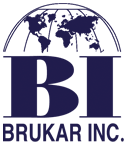Investment Castings
When I first learned about investment casting I asked what does it have to do with investing? Someone made a joke about the investment in tooling, another person thought it had something to do with having to make new patterns every time you wanted to make a mold. While the first person was right that the cost of tooling is higher than for sand casting, the second person was a bit closer to the truth. It turns out people used to say invested when referring to putting on clothing or when surrounding something. In our case for investment casting, the investment refers to the ceramic shell that surrounds the wax or foam pattern.
A challenge I had was when foundries would ask whether I wanted castings made from the silica sol or water glass process. What is the difference? Without getting into detailed chemistry or material properties, silica sol (SiO2) molds will produce castings with a finer surface finish and better dimensional tolerances, roughly ±.005” per 1” of linear dimension, versus double that for water glass (sodium silicate). The difference in price between the two processes is about 20%, but where machining is required some of those savings end up being used to remove more material.
How the investment casting process works:
The lost-wax investment casting process starts with an aluminum mold which will create the wax patterns, each of which will produce a single finished casting.
Those patterns will be added to trees which will then be coated with the ceramic slurry. The number of coats will depend on the alloy being poured and how strong the wall should be to hold the metal.
After cooling, the investment castings are removed from the ceramic shell, detached from the trees and the metal is recycled.
The chemical composition of raw material is retained on file, and any testing of raw castings, such as dye penetrant testing is performed.
After machining and quality control, the castings are ready for packing and dispatch.
The capability of consistently holding better ISO 8062 casting tolerances, much smoother surface finish, and comparable ease of casting complex geometry are the main reasons investment casting is chosen over sand casting. For alloys that are more expensive and difficult to machine, like stainless steel, the reduction in material and machining costs outweigh the higher processing times and costs. If you need any help determining the lowest total cost of ownership for your metal component parts, please reach out to us for a consultation and quote!

